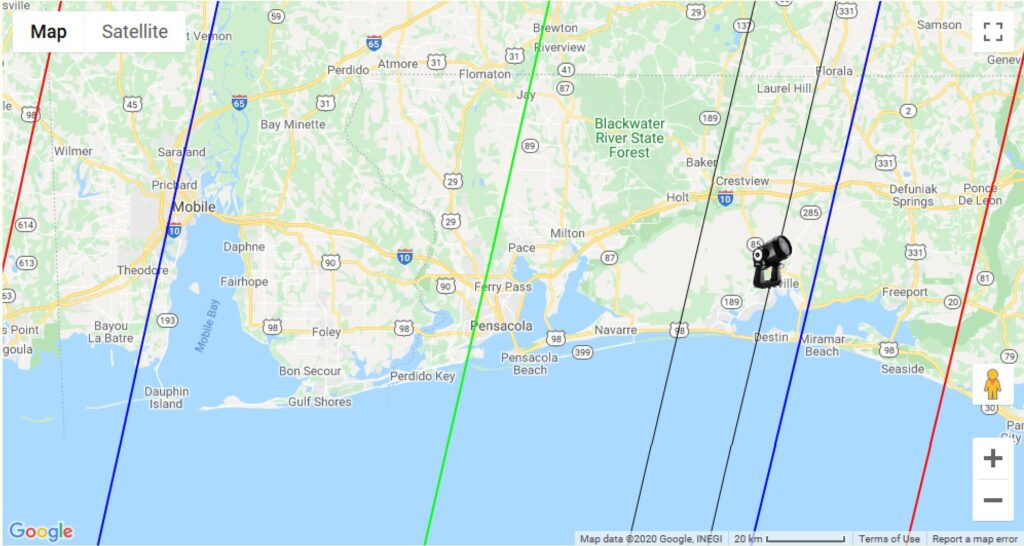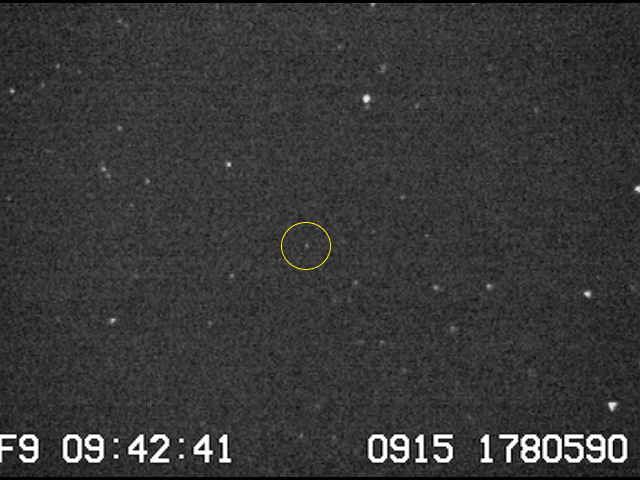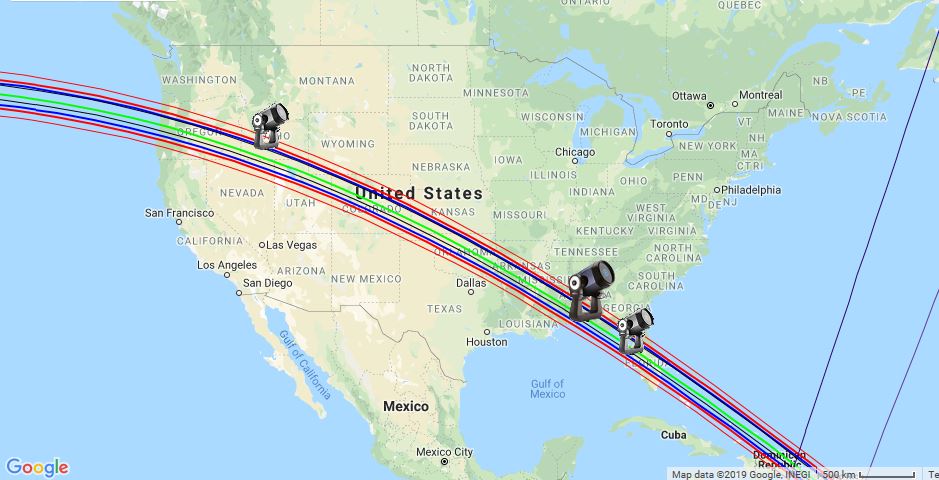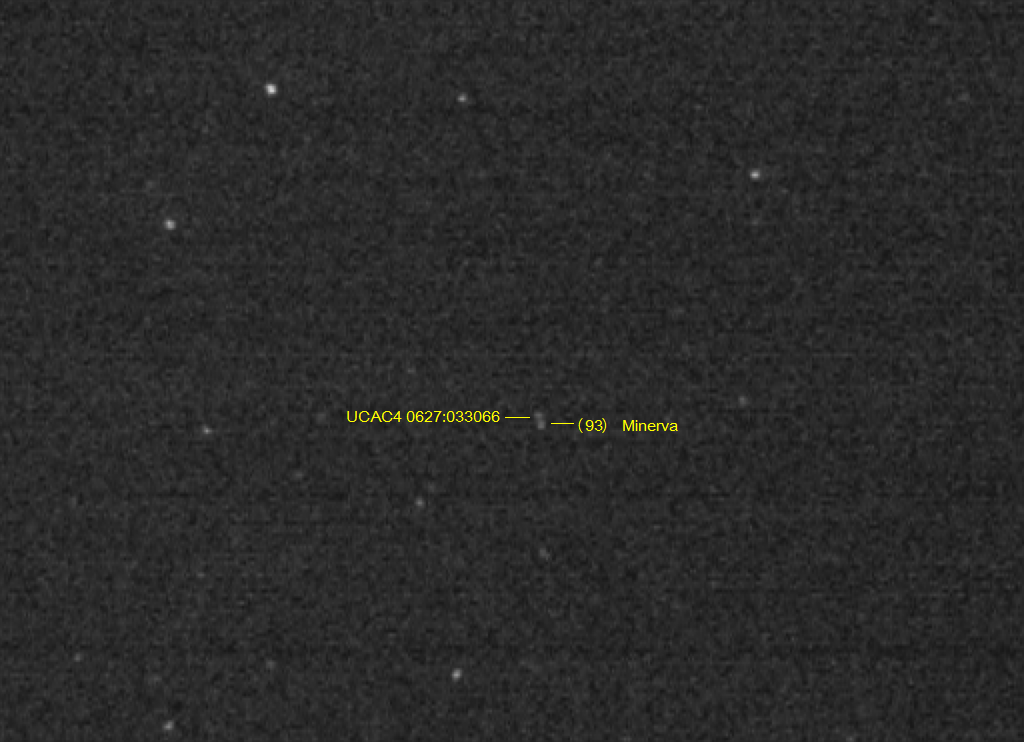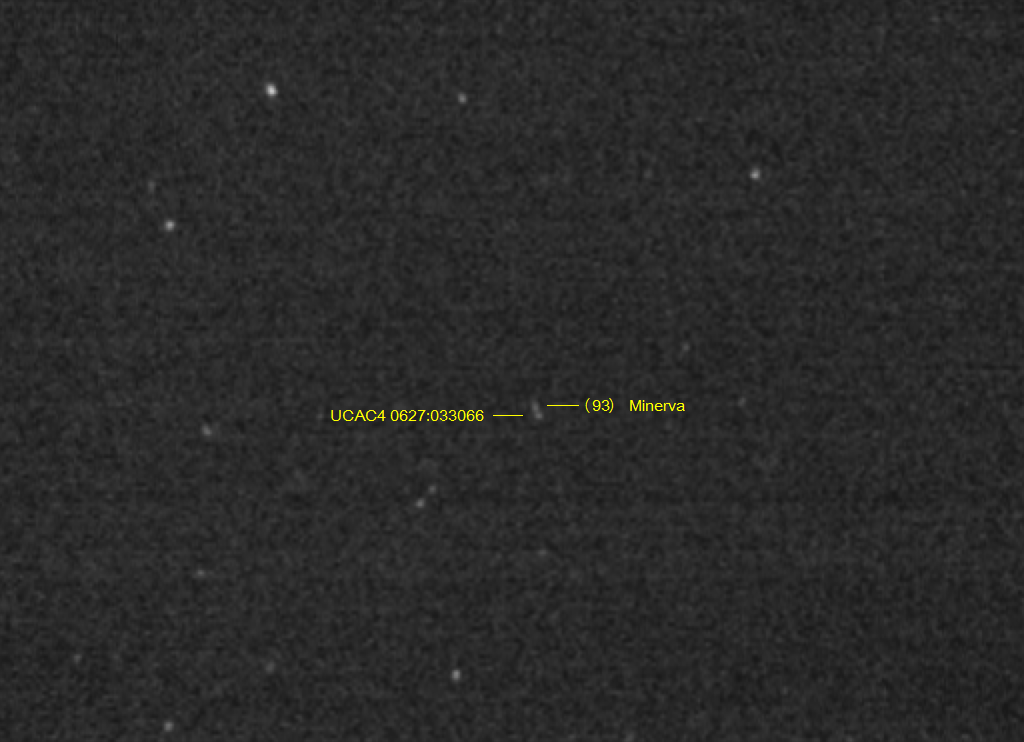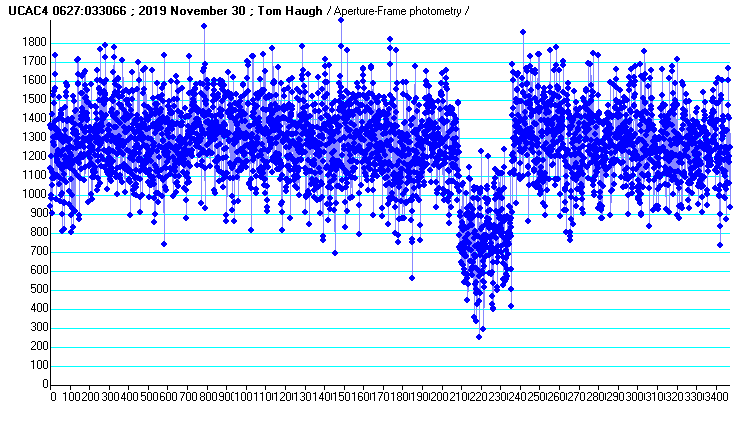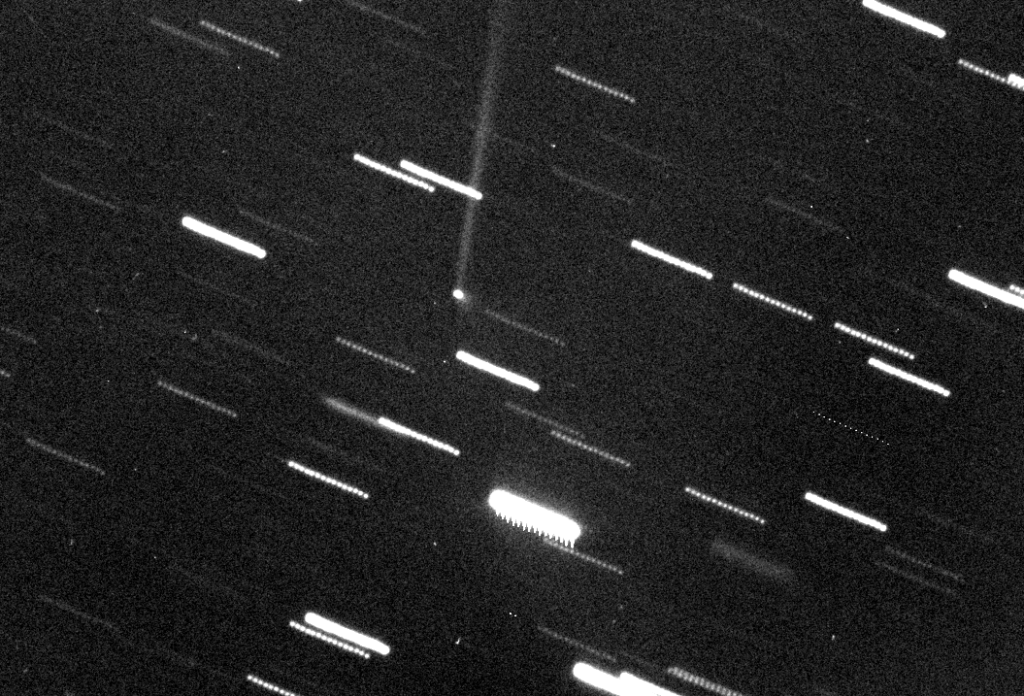At 0447 Monday morning (the 11th) the 98 mile wide asteroid (185) Eunike passed in front of a distant star and cast a shadow that crossed the Earth and coincidentally the PTO. The event is called an occultation and can be used to determine a physical measurement of the asteroid by timing the duration of the shadow.
The chart below shows the predicted shadow path. The green line is the center of the shadow with the right and left limits shown in blue. The red lines are 1-sigma statistical limits. The two black lines are the locations in the path of observers. The other observer was near Chattanooga just south of the Alabama/Tennessee border. There is no option to change the observer’s icons so I’m stuck with the SCT. If there are enough observers spread out across the predicted path, a very accurate shape of the asteroid can be determined. This is the same mechanism that was used to predict the shape of (486958) Arrokoth – AKA 2014 MU69 prior to the close pass by the New Horizons spacecraft.
The occulted star (UCAC4 473-096350) and the asteroid are only one magnitude apart in brightness with the asteroid being the brighter of the two. This made it easy to watch the rock approach the star and once they appeared close enough, their light merged. It is during that time the analysis starts. The predicted maximum duration was 24.7 seconds. The PTO was near the eastern edge of the predicted shadow path so I only saw a 24.3 second drop.
I was not able to see any change in brightness during the event since the two were so close in magnitude. The dimming was only apparent after analysis. During other occultations, where the asteroid is much dimmer, you can see the drop in brightness or if the asteroid is not visible at all, you can watch the target star disappear completely. The brightness of the pair is right at the limit of my occultation equipment. As you can see the brightness measurements are quite noisy, but the analysis software reports a 0.0% chance the drop was due to noise.
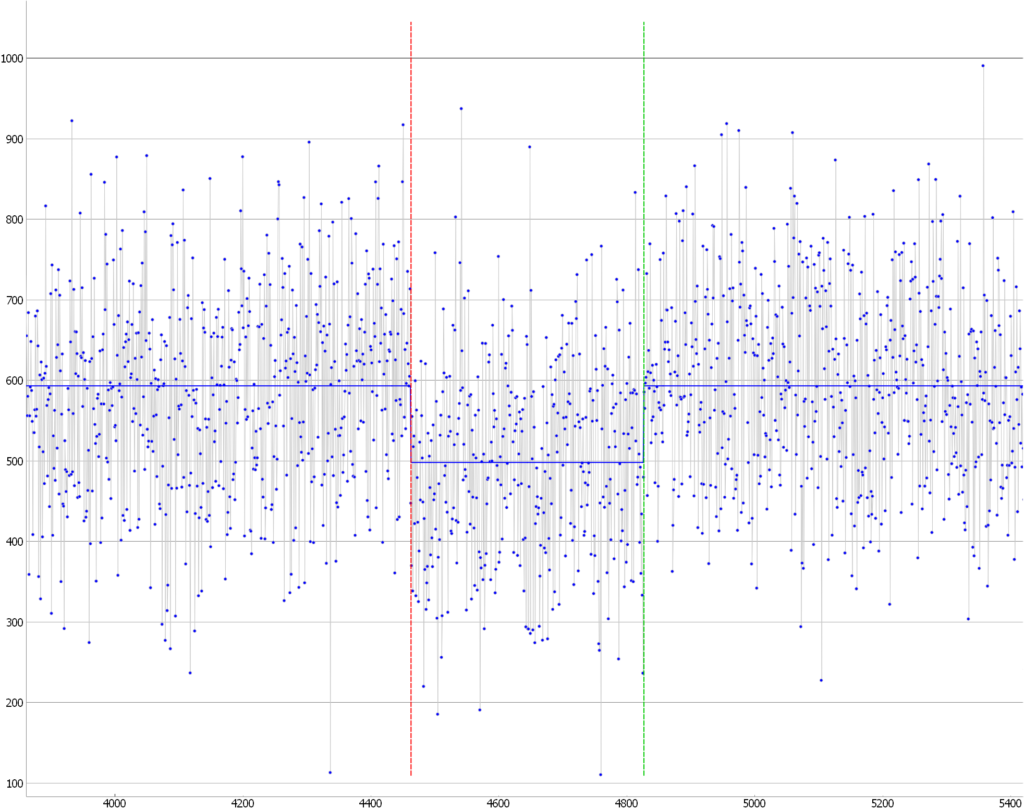
The information collected by the PTO during this event was reported to the IOTA (International Occultation Timing Association).
